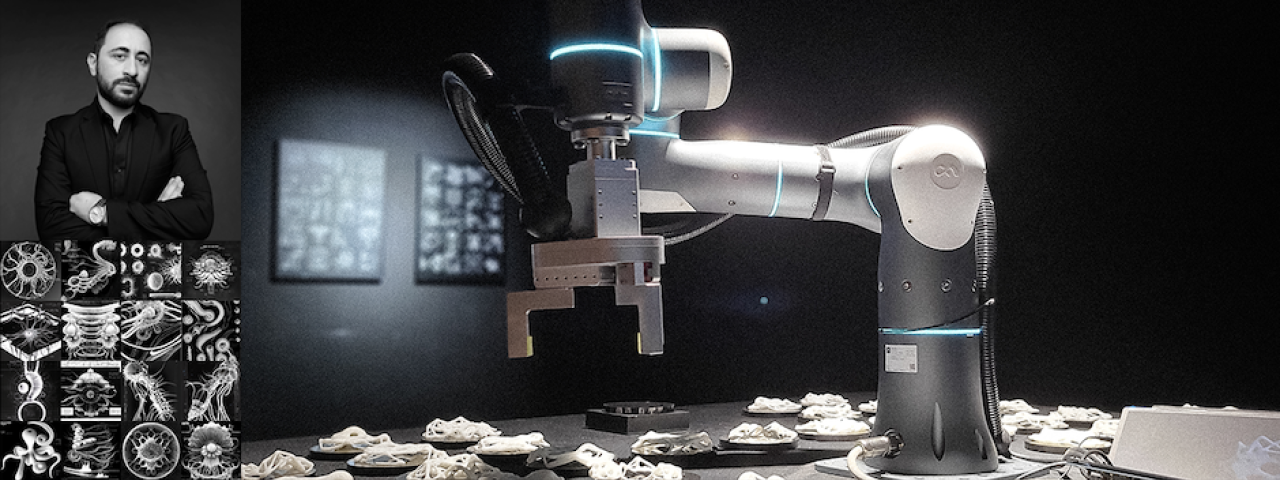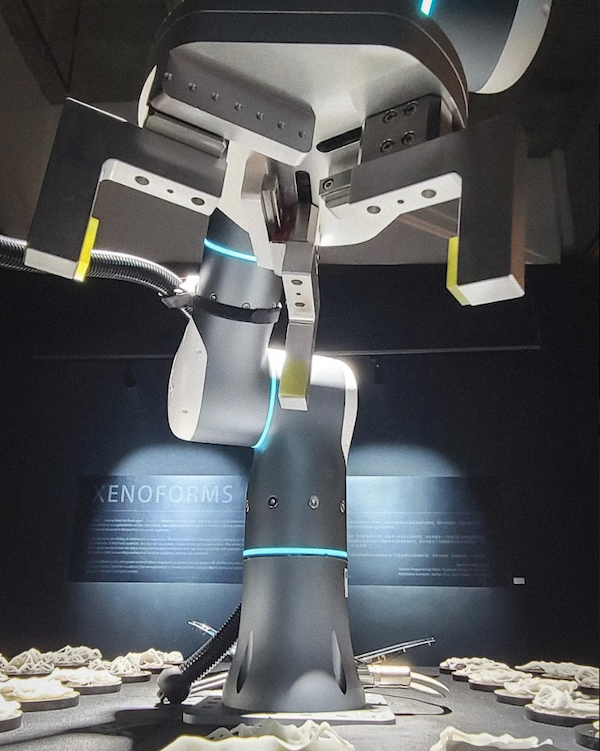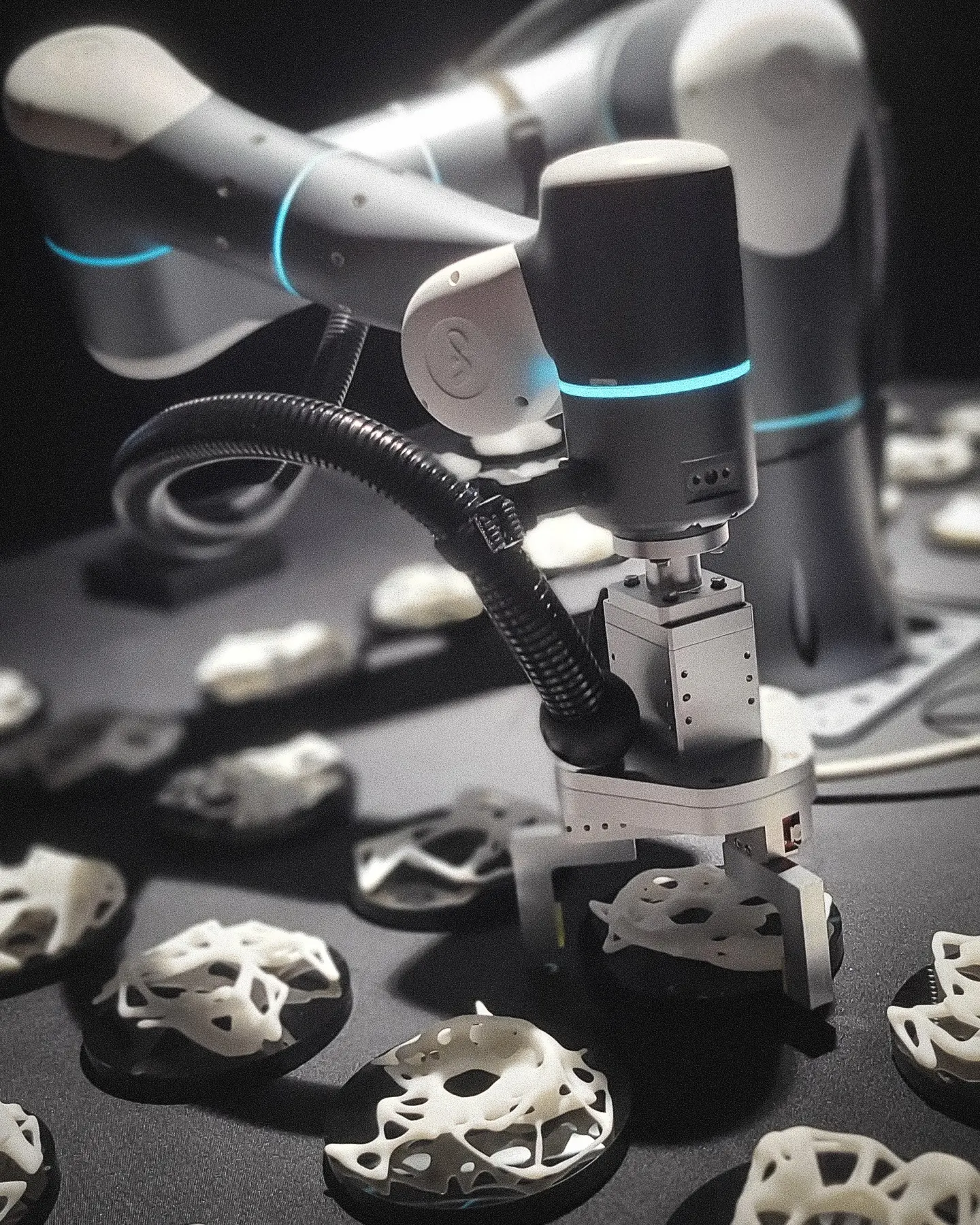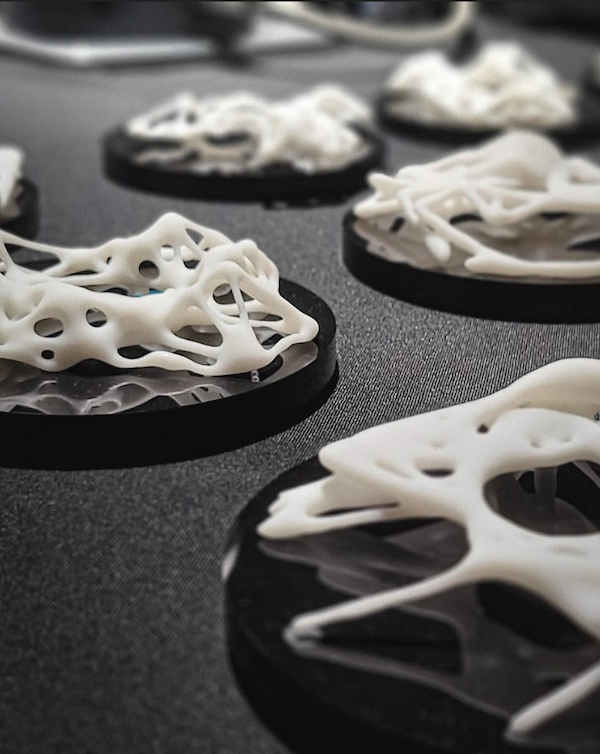
Our phones buzz with notifications when deliveries arrive at our doorstep; robotic vacuums roam across the floors of our homes when we’re away. Automation drives many aspects of daily life, which begs the question: what will the relationship between humans and AI technology look like in the future? And how will it shape our physical, artificial, and natural environments?
Stavros Didakis, an artist, academic, and researcher who has been an associate arts professor of Interactive Media Arts (IMA) at NYU Shanghai since 2019, creates works that explore the relationship between humans and machines.
This fall semester, Didakis taught IMA Capstone class and an elective course, Responsive Environments: Designing Interactive, Sentient, and Intelligent Spaces. Over the years, he has connected students with opportunities to bring their school projects to life beyond the classroom and across Shanghai’s many art spaces. Under his guidance, they have watched their installations light up skyscrapers, have had showings at Shanghai art galleries, and even created interactive virtual worlds during Shanghai's spring 2022 lockdown.
Here he shares about his current exhibition “Xenoforms,” supported by robotics company Flexiv, as well as how his classroom has been enhanced by experiential learning.

What are you currently working on?
I am currently working on the development of artworks and computational systems that investigate and speculate on architecture and human-machine symbiosis. I am interested in building infrastructures that allow us to engage in dialogues related to the technological and perceptual transformations that occur on a variety of scales: from the molecular synthesis of a home to the gigantic infrastructures of a metropolis.
Description: Xenoforms (‘xeno,’ translated to foreign or alien from the Greek word ‘ξένο,’) are machine-generated synthetic prototypes intended to act as augmentation entities that mutate, expand and take full control of an architectural host, mirroring colonization strategies mainly observed in the practices of parasitic organisms. In this instance, we witness an autonomous AI agent (as a laboratory researcher) pursuing a never-ending quest for identifying the form and properties of the fittest candidate, one that will successfully achieve architectural augmentation.
Tell us about “Xenoforms.” How should someone unfamiliar with AI artwork approach this work?
“Xenoforms” consists of machine-generated and 3D-printed designs of parasitic forms, a 7-axis robotic arm, real-time visualization and sonification systems, custom-built software and communication applications, and accompanying diagrams and notes generated with machine learning.
The work reflects on the anticipated moment when computational systems set and pursue self-established goals and motivations, and asks us to consider the symbiotic conditions that are expected to be formed between physical objects, biological organisms, synthetic technologies, and artificially-intelligent entities. It offers the audience a view (“behind the glass”) of an autonomous robotic system that is focused on a specific task: to identify the fittest candidate from a large pool of objects that are positioned around it. During this process, the robotic system seems unable to accomplish its task and begins to exhibit signs of frustration and despair. But, after a while, it will discipline itself and continue pursuing its set goal – and like Sisyphus, it will be stuck in a continuous loop.
Thus, even though the work uses a wide range of experimental/bleeding-edge technologies, it is directly associated with timeless philosophical wanderings, and it invites us all to reflect on how the behavior of an artificial entity is paralleled with the needs and desires we find in our own human nature.

What interpretation of the future does your work suggest?
Ubiquitous computing and communication technologies have brought automation to every aspect of our daily life. As we move closer to the 5th industrial revolution, we will witness a higher integration of organic, physical, and digital systems. The combination of strong AI, cognitive computing, robotics, and synthetic materials will redefine our canonical worldview. The work asks us to consider the possibilities of coexisting and cohabitating with artificial agents that define and set their own goals and motivations.

How has being an artist of emerging technologies informed your classroom approach? Why is experiential learning important?
In the development of a work like this one, I would consider four quite essential stages: contextualization (theoretical & practice-based research), conceptualization, implementation, and presentation. Knowing the “what, why, how, and when” in relation to the content of each stage of your practice is essential. In my teaching, especially my electives, I often follow a similar method and structure. I aim to provide students with a better understanding of how artistic, creative, and critical thinking merge with technological and scientific practice and development approaches so that they can obtain the necessary skills and knowledge to make original, thoughtful, and impactful works.
Teaching (and practicing) beyond the classroom is highly important. Over the last few years, I have created opportunities for our students to display their visual creations on the largest media façades in Shanghai, exhibit installations in galleries, make immersive audiovisual works with cutting-edge development practices and hardware resources, and participate in conferences and international shows.
I firmly believe that experiential learning can benefit learners in multiple ways: learning through direct experience is evidenced to be quite effective. It allows us to think critically and apply our learning in real-world situations. It enhances collaboration abilities and encourages us to take ownership of our learning and practice.
I highly recommend students continue engaging in similar opportunities as it will strengthen their profile and portfolios, which can be a critical factor for both future postgraduate studies and pursuing a career within the creative industries.

What are your upcoming projects?
There are a few projects that I am working on at the moment, and one of them is an expanded version of “Xenoforms” that incorporates additional physical installations and computational and media development (like cognitive computing, multimodal fusion, predictive systems, etc.), and also a work that focuses on developing co-authoring strategies between humans and artificially-intelligent systems.
--
Read about what other NYU Shanghai faculty are working on:
What I’m Working on: Mohamed Yunus Rafiq, Assistant Professor of Anthropology
What I’m Working On: Almaz Zelleke Explores the Possibilities of Universal Basic Income
What I’m Working On: Pragmatic Solutions with Rodrigo Zeidan
What I’m Working on: Can When You Eat Affect How Well You Sleep?

